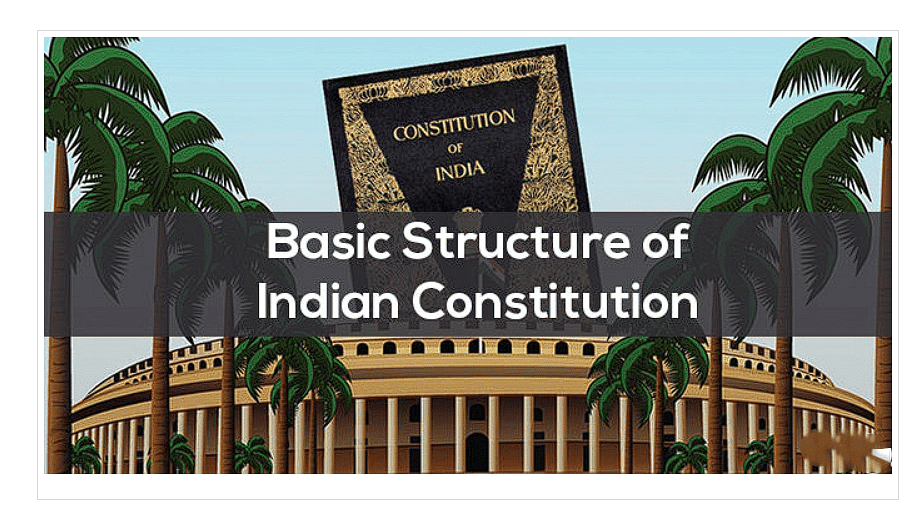Laxmikanth Summary: Basic Structure of the Constitution | Indian Polity for UPSC CSE PDF Download
The basic structure of a constitution includes a preamble outlining national goals, fundamental rights for citizens, principles guiding government policies, the organization of government branches, rules for citizenship, procedures for amendments, provisions for emergencies, the distribution of powers, judicial review, and a supremacy clause ensuring the constitution's primacy. These elements collectively form the foundational framework of a nation's legal and political system.

Emergence of Basic Structure
1. Shankari Prasad Case (1951)
- First challenge to the constitutional validity of the First Amendment Act (1951).
- Supreme Court ruled that Parliament, under Article 368, can amend Fundamental Rights.
- The term 'law' in Article 13 does not include constitutional amendment acts, so they won't be void.
2. Sajjan Singh Case (1964)
- Affirmed Parliament's power to amend the Constitution under Article 368.
- Constitutional amendment acts are not considered laws under Article 13.
3. Golak Nath Case (1967)
- Supreme Court reversed its previous stand.
- Ruled that Fundamental Rights are "transcendental and immutable," cannot be amended by Parliament.
- Constitutional amendment acts are considered laws under Article 13 and can be void if they violate Fundamental Rights.
4. 24th Amendment Act (1971)
- Parliament's response to Golak Nath case.
- Declared that Parliament has the power to amend Fundamental Rights under Article 368.
- Stated that such an act will not be considered a law under Article 13.
5. Kesavananda Bharati Case (1973)
- Overruled Golak Nath case.
- Upheld the 24th Amendment Act.
- Introduced the "basic structure" doctrine, stating Parliament cannot alter fundamental features of the Constitution.
6. Indira Gandhi Case (1975)
- Applied the "basic structure" doctrine.
- Invalidated a provision of the 39th Amendment Act (1975) as it affected the basic structure.
7. 42nd Amendment Act (1976)
- Parliament's response to the "basic structure" doctrine.
- Declared no limitation on Parliament's constituent power; amendments cannot be questioned in court.
- Attempted to exclude judicial review.
8. Minerva Mills Case (1980)
- Invalidated the provision of the 42nd Amendment that excluded judicial review.
- Affirmed that Parliament, despite its amending power, cannot convert limited power into an absolute one.
9. Waman Rao case (1981)
- The Supreme Court adhered to the doctrine of the basic structure' and further clarified that it would apply to constitutional amendments enacted after April 24, 1973
Elements of the basic structure
The following have emerged as 'basic features’ of the Constitution or elements / components / ingredients of the ‘basic structure’ of the constitution:
1. Supremacy of the Constitution
2. Sovereign, democratic and republican nature of the Indian polity
3. Secular character of the Constitution
4. Separation oi powers between the legislature, the executive and the judiciary
5. Federal character of the Constitution
6. Unity and integrity of the nation
7. Welfare state (socio-economic justice)
8. Judicial review
9. Freedom and dignity of the individual
10. Parliamentary system
11. Rule of law
12. Harmony and balance between Fundamental Rights and Directive Principles
13. Principle of equality
14. Free and fair elections
|
144 videos|639 docs|203 tests
|
FAQs on Laxmikanth Summary: Basic Structure of the Constitution - Indian Polity for UPSC CSE
| 1. What is the basic structure of the Constitution? |  |
| 2. What are the elements of the basic structure of the Constitution? |  |
| 3. Why is the basic structure of the Constitution important? |  |
| 4. Can the basic structure of the Constitution be amended? |  |
| 5. How does the concept of the basic structure impact the governance of India? |  |






















